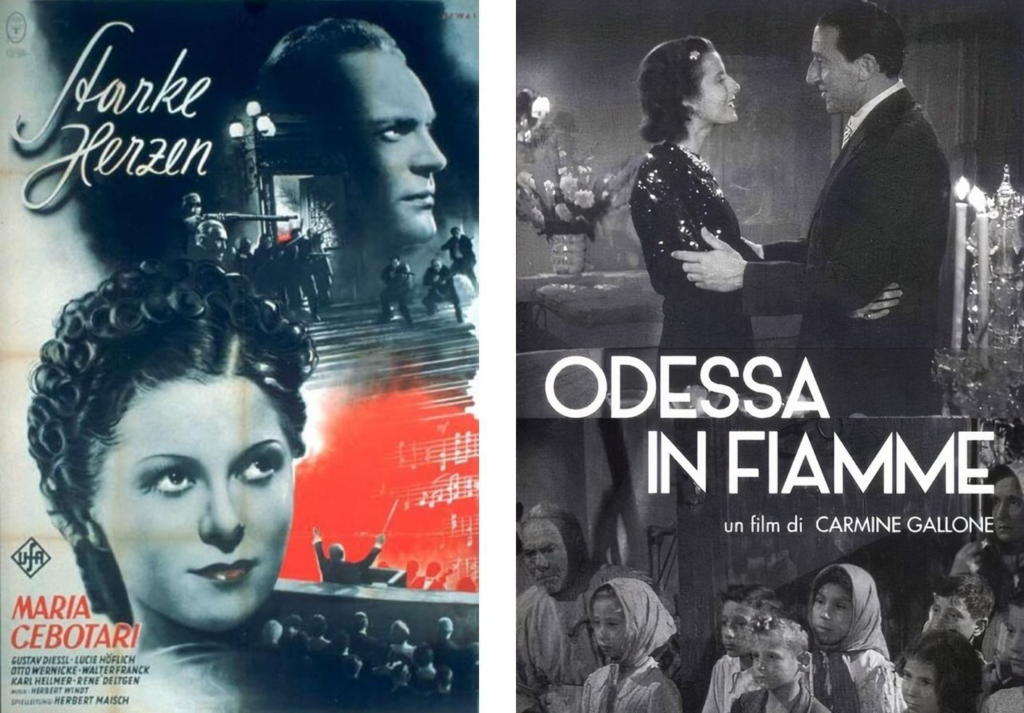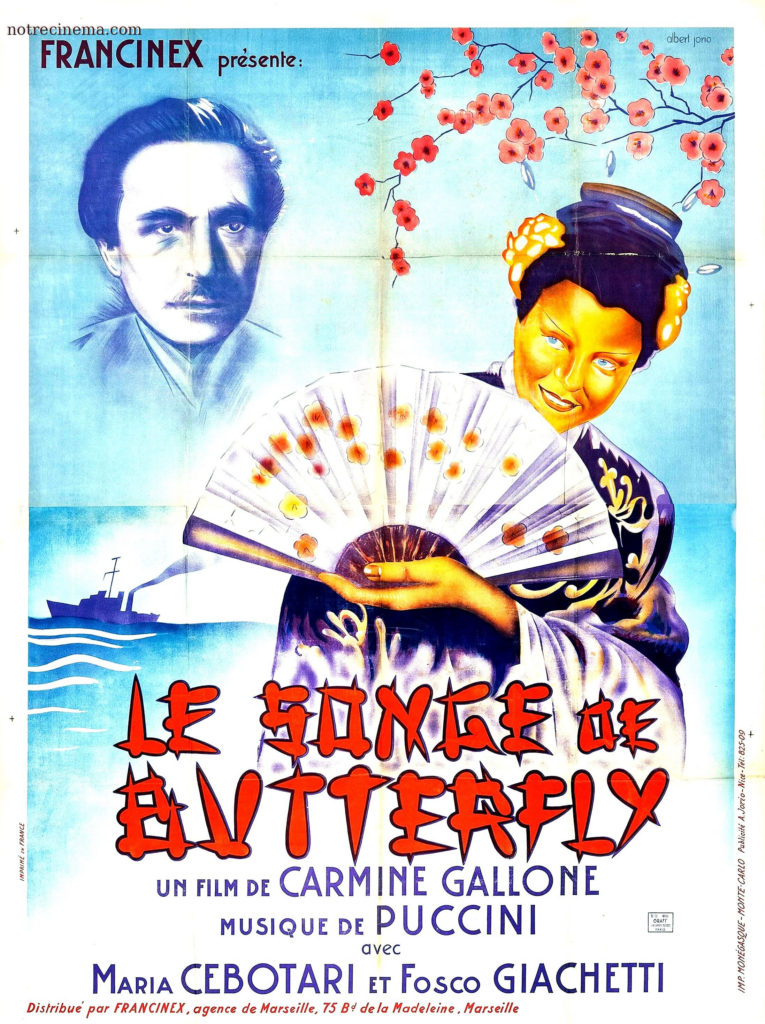By Nicoleta Roman (‘Nicolae Iorga’ Institute of History-Romanian Academy & New Europe College-Institute of Advanced Study, Bucharest)
Interwar period is a time of political and social convulsions, with totalitarian regimes rising to power in all corners of Europe. Culture played a significant role and many of artists tried to handle the propaganda, the regimes’ entanglements and pressureswhile still working. In Germany and Italy, fascism ’captured’ institutions and conquered the minds of young and old. Similarly in Russia communism imposed itself and aspired to absorb the neighbouring countries into its political influence.

Maria Cebotari is an artist, an opera singer and an actress that knew well both spaces. Born in 1910, in Bessarabia, a former province of Russian Empire that experienced a process of Russification, she saw as a child this territory proclaiming its independence and unite with Romania in 1918. The majority of population was Romanian and the collapse of empires at the end of WWI gave to Bessarabia’s elite this opportunity which they took advantage of. The union with Romania made possible a disengagement with now a Bolshevik Russia and that people from Bessarabia to enrol in a less ideologized educational system. After Maria Cebotari finishes her studies, she is hired as an actress in Chișinău (now Republic of Moldova) at 16 years of age and afterwards she becomes part of count Alexandr Vîrubov’ artistic company and tours France (1927-1928). With a scholarship from the Romanian state – through the minister of foreign affairs, Nicolae Titulescu – she studies at the Paris Conservatory. She becomes member of the Moscow Music Theatre, a place where she continues to refine her skills. Later on, Maria Cebotari decides to study in Berlin where she took canto classes at Hoschule for Musik (1929-1931). Thus, she is an artist that represents the music schools from three countries: Republic of Moldova (linked to Romania and Russia), France and Germany.
Maria Cebotari makes her international debut as opera singer in Dresda and in 1934, at 24 years of age she was the youngest singer to receive the title of Kammersengerin, an award of the German critics. The performance in Dresda is considered to be thebeginning of a prodigious career. A moment when renounces at her links with by now a communist Russia. Germany and Austria will become her adoptive countries as Maria Cebotari will be hired and be a primadona for the Operas in Berlin (1936-1946) and Vienna (1946-1949). When she decided to settle in the German-speaking space she was not fully aware that she will ‘change’ a totalitarian regime for another, as fascism rose fully to prominence afterwards. She will perform on the scenes of the Axis (the powers of Germany, Italy and Japan; and their satellite states: Hungary, Romania, Bulgaria, Finland, Czechoslovakia, Croatia) but also on other operas of Europe and of Americas like Convent Garden (London) or Metropolitan Opera House (New York).

Maria Cebotari was also a film actress and played in musical films and two anti-communist propaganda movies. Paradoxically, both will be censured. The first, Starke Herzen im Sturm (Strong Hearts in the Storm) was made in 1937 and is inspired by the revolutionary Bolshevik Russia. The German authorities forbid it as they feared the public might understand it also as an anti-Nazi, anti-totalitarian movie. The second, Odessa in fiamme (Odessa in flames), an Italo-Romanian coproduction (1942), describes the fate of a Bessarabian woman and her child, both left by a husband and a father amidst the Russian invasion in 1940. The movie was labelled as fascist by the communist regime and all the copies burned. Fortunately, in 2004 a copy was found in a private collection.

With these two movies, Maria Cebotari was culturally censored as an actress with the rest of the cast by both totalitarian regimes of her time: in Germany, the adoptive country and in the territories marked by the influence of the Soviet Union (Romania, Republic of Moldova). However, she considered that her main profession was as an opera singer. That is probably why she preferred to work in movies that were based on operas or in relation with opera singers (like Maria Malibran, in 1943) and in a way less ideologically altered.


The newspapers of interwar and wartime Europe highlight her tours and the diffusion of her work, especially the musical movies she made. Maria Cebotari became known as the best performer of ‘Madame Butterfly’ and more generally of the works of Mozart, Giacomo Puccini and Richard Strauss. She died of cancer at age 39 and was for long time forgotten in the communist East. After the fall of Soviet Union, she was rediscovered and recently, in 2022, an international music contest was launched and named after her in Chișinău (Republic of Moldova): Teleradio International Contest of Opera Performers ‘Maria Cebotari’.

List of illustrations:
- Maria Cebotari, 1937 by Atelier Wilinger. Copyright: Theatermuseum, Vienna. www.theatermuseum.at/de/ibject/514172
- Maria Cebotari in a performance in Prague, then in Czechoslovakia. Le Menestrel: journal de musique, 98 annee, no. 8, vendredi 21 fevrier 1936, p. 64.
- Starke Herzen im Sturm (poster) via The Movie Database Starke Herzen im Sturm (1937) — The Movie Database (TMDB) (themoviedb.org)
- Odessa in fiamme (poster) via Eastern European Movies Odessa in Flames (Odessa in fiamme) 1942 in English Online (easterneuropeanmovies.com)
- Programme where we see listed the musical movie Le Songe de Butterfly made in 1939 after the opera Madame Butterfly. In Le Nouveau film: l’organe de la production, (Paris-Cannes), January 1944, no. 8.
- Le Songe de Butterfly (poster) via The Movie Database Le songe de Butterfly (1939) — The Movie Database (TMDB) (themoviedb.org)
- Teleradio International Contest of Opera Performers ‘Maria Cebotari’.
References:
- Aurelian Dănilă, Maria Cebotari. In amintiri, cronici si imagini, 1999.
- Viorel Cosma, Maria Cebotari. De la vedetă la legendă, in ,,Actualitatea Muzicală”, no. 1/2013, p. 4.